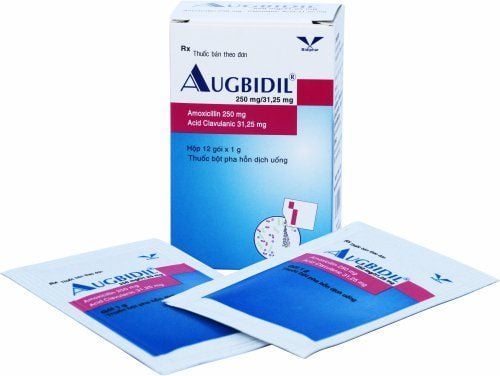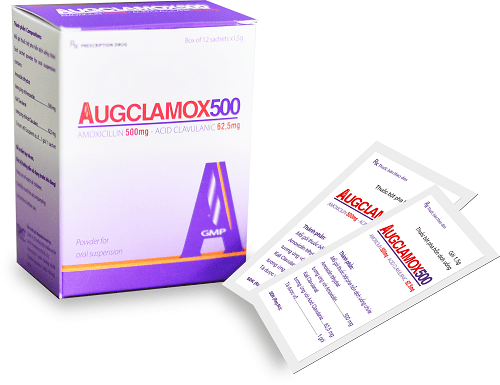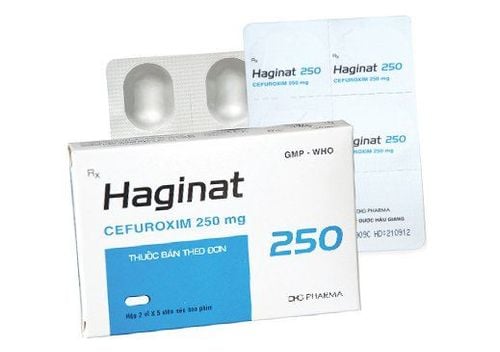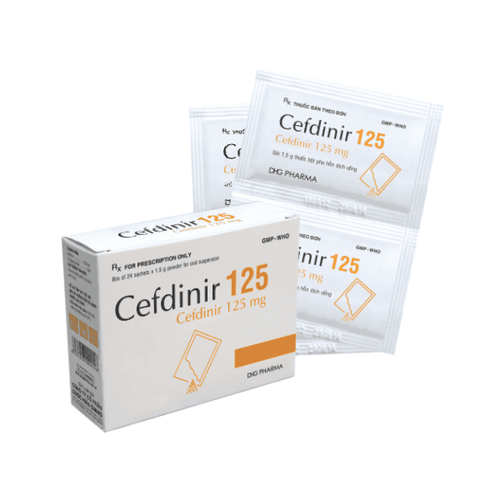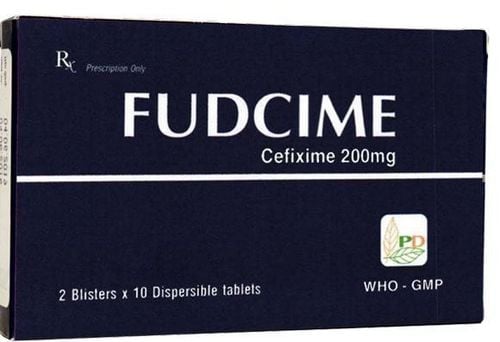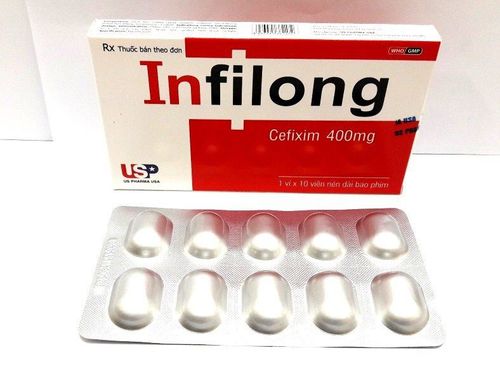This is an automatically translated article.
Otitis media is one of the most common reasons in children. By the time a child is three years old, nearly 85% of children have had an ear infection. However, because the child can't speak yet and the child's ability to perceive the disease is still limited, parents need to pay attention to recognize the signs of the disease and use the treatment as soon as the doctor prescribes it.
1. How do parents recognize otitis media in children?
Otitis media is an infection that occurs just behind the eardrum, can occur at any age, but is extremely common in children 3 months to 3 years old and is often accompanied by the common cold. While children cannot recognize or speak, it is very important to treat otitis media with medicine at the right time to avoid dangerous complications such as hearing loss. Therefore, parents need to monitor to detect warning signs of otitis media and take their children to the doctor promptly.Warning signs and symptoms of otitis media include: fever (may go up above 39°C), ear pain, feeling of fullness in the ear, fluid accumulation and pus discharge in the middle ear cavity, causing pain and temporary hearing loss, rupture of the eardrum leading to pus and fluid draining into the ear canal, ...
In infants, toddlers and children, signs of otitis media may include: not limited to the following: irritability, fussiness, difficulty feeding, trouble sleeping, tugging or tugging at the ears, complaints of ear pain and fullness if the child is able to talk, fever can occur at any age . These symptoms are often combined with signs of an upper respiratory tract infection such as runny or stuffy nose, cough, cold, ...
MORE: Notes when using medicine to treat acute otitis media in young
2. Distinguishing types of otitis media in children
Otitis media can be classified into many different types depending on the location of the inflammation. However, there are three common types of otitis media that parents need to recognize and differentiate: “swimming otitis media,” acute otitis media, and otitis media with effusion.
2.1 Swimming otitis media The reason it is called swimming otitis media is because in the summer when many children spend a lot of time swimming, the risk of swimming otitis media is caused by dirty water entering the body. the ear canal will increase. Bacteria and fungi can get trapped in the ear canal, causing an infection, leading to pain and discomfort, which is often made worse by chewing. Other symptoms may include itching and a feeling of fullness in the ear.
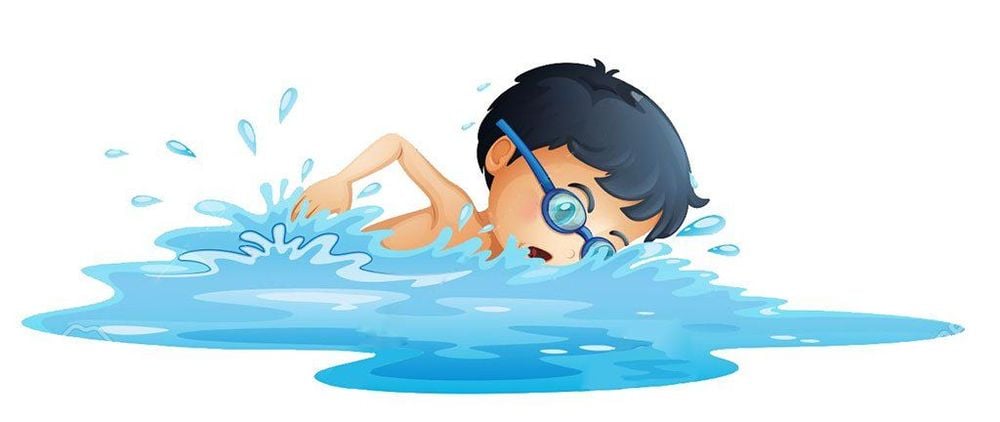
Viêm tai giữa bơi lội là một trong các nguyên nhân gây viêm tai ở trẻ
2.2 Acute otitis media (AOM) Acute otitis media is an inflammation of the middle ear with fluid in the ear cavity and obvious inflammatory symptoms. The eardrum will be red and swollen, the ear will hurt and hearing will decrease, the child may have a fever and sometimes fluid will drain from the ear. Newborns with acute otitis media may be irritable or lethargic, sometimes rubbing their hands against their ears.
2.3 Otitis media with effusion (OME) This type of otitis media is characterized by fluid in the middle ear but without obvious signs of infection. Hearing loss will be the only symptom. In addition, when the doctor examines the eardrum, the eardrum may be opaque and cloudy.
3. What role do antibiotics for otitis media play in children?
Although antibiotics for otitis media in children are not necessary in all cases, they will be helpful in getting the child to feel better faster (after 1-2 days). If otitis media is allowed to heal on its own, the child will usually experience fever and pain for 4 to 7 days. In addition, timely use of antibiotics for otitis media in children can prevent the risk of infection from spreading to the brain and the bone around the ear. These are very rare side effects, but they can happen.
Especially with acute otitis media (AOM), antibiotics for otitis media for children are the typical treatment. To detect acute otitis media in children, the doctor will use an otoscope and check the eardrum for swelling and redness or opaque and cloudy. If the diagnosis is confirmed as acute otitis media (AOM), the appointment of antibiotics for otitis media in children immediately will help the disease recover faster and more completely than waiting to see if the child will recover on their own. .
However, the use of antibiotics for otitis media in children with otitis media with effusion (OME) is not strictly necessary. Therefore, if the exact type of otitis media cannot be diagnosed, your doctor may recommend a watchful waiting period to see if the ear pain resolves on its own before prescribing antibiotics. If after two days, the symptoms of otitis media persist, the doctor will decide to use antibiotics for otitis media in children.
In fact, 80% of uncomplicated otitis media will clear up on their own without using antibiotics for otitis media in children. In cases where antibiotics are needed, the course of treatment is about 7 days. For chronic ear infections with effusion, your doctor may recommend a more appropriate treatment than catheterization. These tiny tubes fit into the eardrum and allow the ear to ventilate and breathe, making it more comfortable.
SEE ALSO: What should I do when taking medicine to treat otitis media?
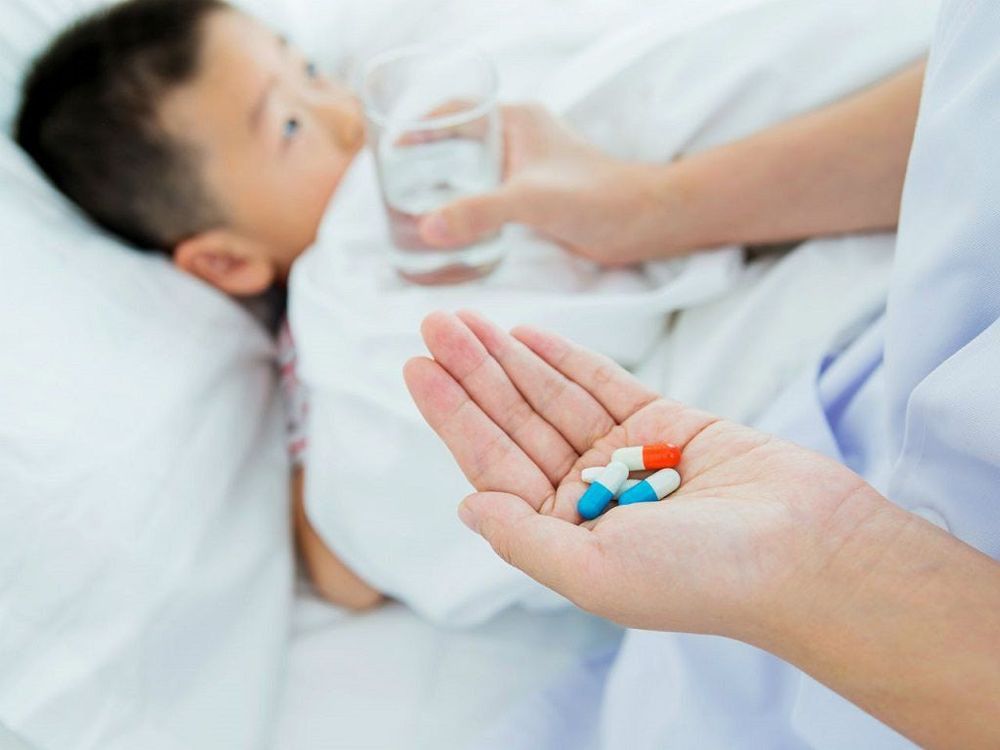
Cha mẹ cần sử dụng thuốc kháng sinh trị viêm tai giữa cho trẻ em theo đúng chỉ định của bác sĩ
4. What side effects may occur when using antibiotics for otitis media in children?
Using antibiotics for otitis media in children can cause some unwanted side effects including: diarrhea, appearance of a fungal rash in the diaper area, thrush in the mouth, vomiting, rash, ... If you notice any prolonged and severe symptoms when treating otitis media with medicine for your child, take your child to the doctor for a re-examination.
Ideally, parents should get their children vaccinated against the flu periodically and annually to help reduce the chance of children getting otitis media.
5. When using antibiotics for otitis media in children, what should be noted?
When using antibiotics for otitis media for children, in addition to oral medications, the doctor will prescribe antibiotic-containing ear drops. Accordingly, in order for ear drops to work optimally, it is very important to properly use ear drops as follows.
Before using ear drops for children, parents should clean their hands with soap, to avoid bacterial infection. Hold the ear drops in the palm of your hand for 1 to 2 minutes to relieve ear discomfort from cold drops. Then, remove the cap of the bottle, place it on a clean, dry surface and check that the dropper is clean and not chipped or cracked. When instilling the medicine, put the child in the correct position as follows: tilt the head of the affected ear upwards and instill the number of drops as directed by the doctor. Next, gently pull the ear canal up and down to allow the medicine to flow in and keep the head tilted for 2 to 5 minutes before returning to the normal position. Finally, use a soft cloth or tissue to clean the outside of the ear and put the cap back on.
In order to prevent unwanted complications, especially to limit the risk of extremely dangerous antibiotic resistance, parents should take their children to medical centers for examination and prescribed use. antibiotics for otitis media for children.
With many years of experience in examining and treating diseases in children, now the Pediatrics Department at Vinmec International General Hospital has become one of the major health care centers, capable of examining screening and treatment of many specialized diseases in children. Therefore, if the child shows signs of otitis media, parents can take the child to Vinmec International General Hospital for examination and receive support and advice from doctors and pharmacists. Use effective antibiotics to avoid dangerous antibiotic resistance.
Please dial HOTLINE for more information or register for an appointment HERE. Download MyVinmec app to make appointments faster and to manage your bookings easily.
References: webmd.com, merckmanuals.com, medicinenet.com, abingtonhealth.org



